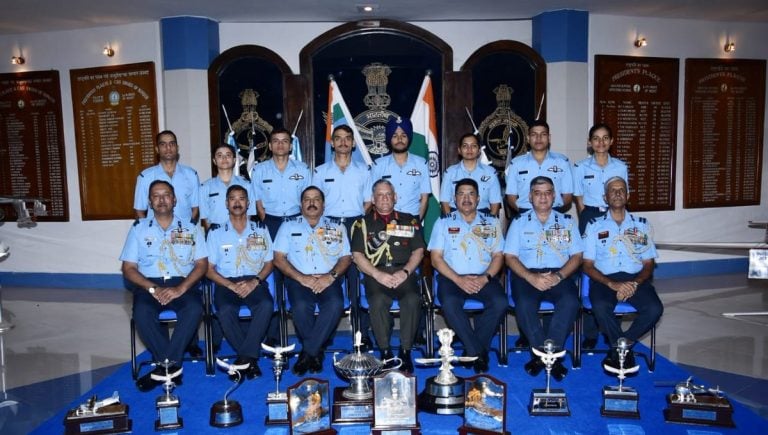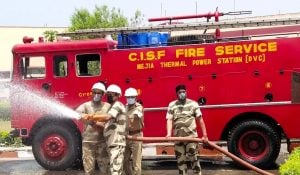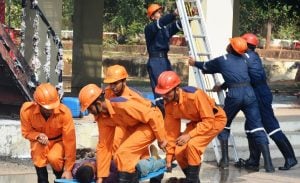The Air Force Common Admission Test (AFCAT) is a highly competitive examination conducted by the Indian Air Force (IAF) to recruit eligible candidates for various branches of the Air Force. It is a gateway for young and dynamic individuals aspiring to serve their nation. Aspiring candidates for the AFCAT 1 2024 examination not only need to excel in their aptitude and reasoning skills but also possess a sound understanding of Static General Knowledge. In this article, we will explore an important aspect of Static GK – the rivers, dams, and reservoirs in India, which are crucial for defence aspirants preparing for the AFCAT exam.
Indian Rivers: The Lifelines of the Nation
India is blessed with an extensive river system that has played a pivotal role in the country’s historical, cultural, and economic development. The major rivers in India can be broadly classified into two categories: the Himalayan rivers and the Peninsular rivers.
Himalayan Rivers
- Ganga (Ganges): Originating from the Gangotri Glacier in Uttarakhand, the Ganga flows through Northern India, passing through states like Uttarakhand, Uttar Pradesh, Bihar, and West Bengal. It is one of the holiest rivers in India and is essential to the culture and spirituality of the country.
- Yamuna: The Yamuna River originates from the Yamunotri Glacier in Uttarakhand and is a tributary of the Ganga. It flows through states such as Himachal Pradesh, Haryana, and Uttar Pradesh.
- Brahmaputra: This trans-boundary river flows through Tibet (China), India, and Bangladesh. It originates in Tibet and enters India in Arunachal Pradesh, further flowing through Assam and joining the Ganges in Bangladesh.
Peninsular Rivers
- Godavari: The Godavari River is the second-longest river in India after the Ganges. It originates in the Western Ghats of Maharashtra and flows through states like Telangana, Andhra Pradesh, and Chhattisgarh.
- Krishna: The Krishna River also originates in the Western Ghats and flows through Maharashtra, Karnataka, and Andhra Pradesh before emptying into the Bay of Bengal.
- Cauvery: Originating in Karnataka, the Cauvery River flows through Tamil Nadu and Puducherry, playing a vital role in the agriculture and economy of the region.
Dams and Reservoirs in India: Engineering Marvels
Dams and reservoirs play a crucial role in managing water resources, providing irrigation, generating hydroelectric power, and mitigating floods. Here are some prominent dams and reservoirs in India:
- Bhakra Nangal Dam: Located on the Sutlej River in Himachal Pradesh, it is one of the highest gravity dams in the world and serves as a major source of irrigation and electricity generation.
- Tehri Dam: Situated on the Bhagirathi River in Uttarakhand, the Tehri Dam is one of the highest dams in India and a significant source of hydroelectric power.
- Sardar Sarovar Dam: This dam, built on the Narmada River in Gujarat, is one of the largest dams in the world in terms of volume. It provides water for irrigation, drinking, and power generation.
- Hirakud Dam: Located on the Mahanadi River in Odisha, it is the longest major earthen dam in India and contributes to irrigation and flood control.
- Mettur Dam: Situated on the Cauvery River in Tamil Nadu, the Mettur Dam is a key water source for agriculture and power generation in the region.
- Indira Sagar Dam: Built on the Narmada River in Madhya Pradesh, it is one of the largest reservoirs in India and serves multiple purposes, including irrigation and power generation.
Understanding the geographical features, river systems, dams, and reservoirs in India is not only crucial for AFCAT aspirants but also contributes to a comprehensive awareness of the country’s vital resources and infrastructure. This knowledge is essential for anyone interested in national defense and strategic planning.
In conclusion, as you prepare for the AFCAT 1 2024 examination, ensure that you have a firm grasp of India’s rivers, dams, and reservoirs. This Static GK knowledge will not only aid you in cracking the exam but also in your broader understanding of the nation’s geographical and infrastructural aspects. Good luck with your preparations, and may you find success in your pursuit of a career in the Indian Air Force!

















